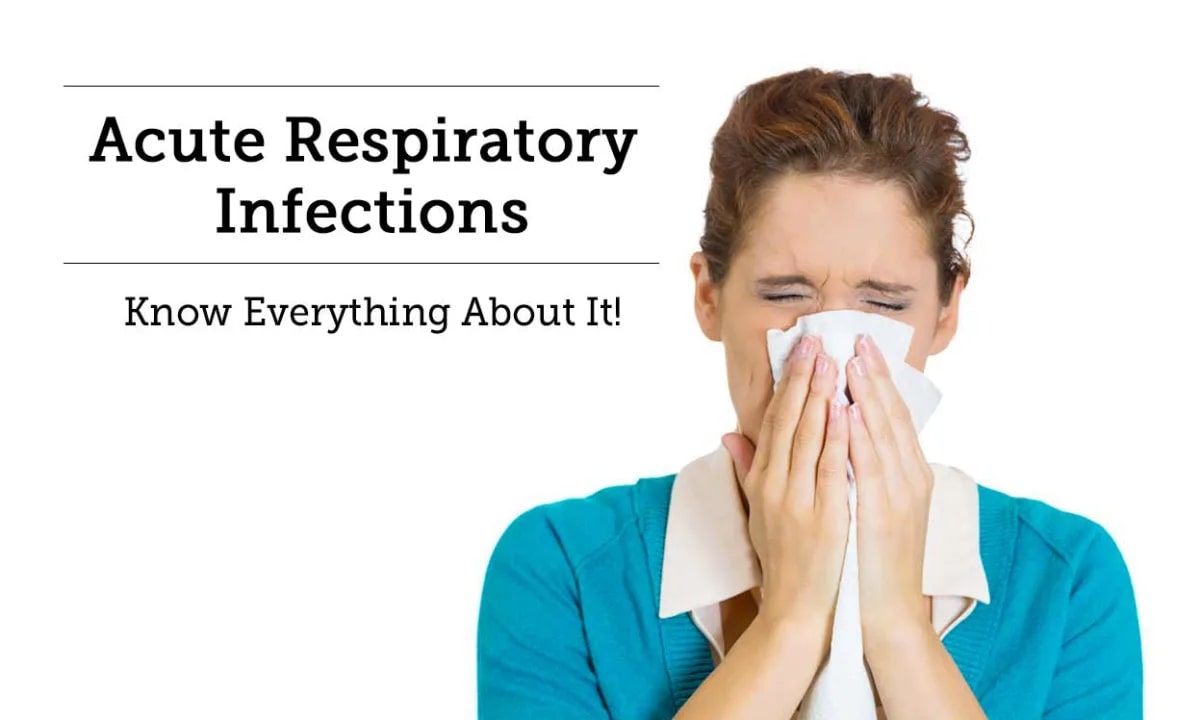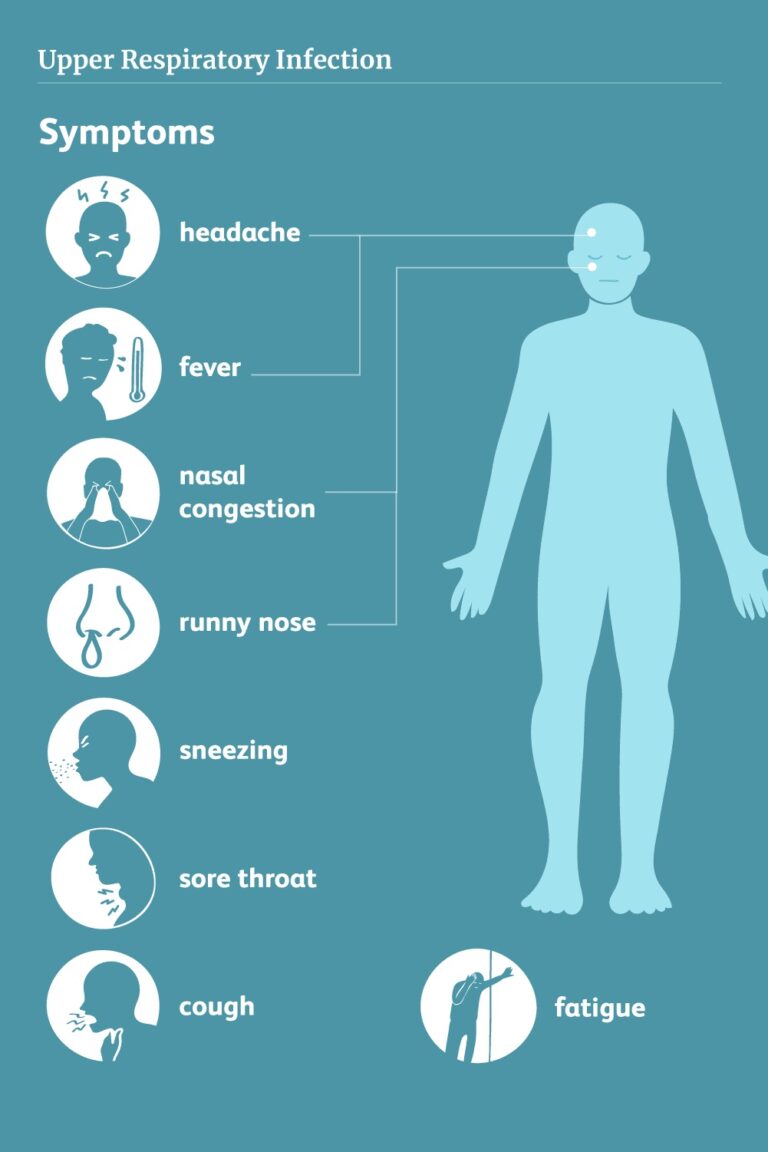WHAT IS ACUTE UPPER RESPIRATORY INFECTION?
Anybody who has ever had a cold knows about acute respiratory infections (URIs). An acute URI is a life-threatening infection of your upper respiratory tract. Your upper respiratory tract involves the nose, throat, pharynx, larynx, and bronchi.
There is no doubt, that the common cold is the most well-known URI. Other types of URIs involve sinusitis, pharyngitis, epiglottitis, and tracheobronchitis. Influenza, on the other hand, is not a URI because it is a systemic disease.
WHAT CAUSES ACUTE UPPER RESPIRATORY INFECTION?
Both viruses and bacteria could cause acute URIs:
Viruses
- Rhinovirus
- Adenovirus
- Coxsackievirus
- Parainfluenza virus
- Respiratory syncytial virus
- Human metapneumovirus
Bacteria
- Group A beta-hemolytic streptococci
- Group C beta-hemolytic streptococci
- Corynebacterium diphtheriae (diphtheria)
- Neisseria gonorrhoeae (gonorrhea)
- Chlamydia pneumoniae (chlamydia)
WHAT ARE THE TYPES OF ACUTE UPPER RESPIRATORY INFECTION?
The types of URIs refer to the parts of the upper respiratory tract most affected by the infection. In addition to this the common cold, there are other types of URIs:
Sinusitis
Sinusitis is the inflammation of the sinuses.
Epiglottitis
Epiglottitis is the inflammation of the epiglottis, the upper part of your trachea. It protects the airway from foreign particles that can get into the lungs. Swelling of the epiglottis is dangerous because it could block the flow of air into the trachea.
Laryngitis
Laryngitis is an inflammation of your larynx or the voice box.
Bronchitis
Inflammation of the bronchial tubes is defined as bronchitis. The right and left bronchial tubes branch off from the trachea and extend to the right and left lungs
WHO IS AT RISK OF ACUTE UPPER RESPIRATORY INFECTION?
The common cold is the most frequent cause of doctor visits in the United States. URIs spread from one person to another via aerosol droplets and direct hand-to-hand contact. The risk increases in these situations:
- When someone who is sick sneezes or coughs without covering their nose and mouth droplets containing the viruses are sprayed into the air.
- When people are in a closed-in area or in crowded conditions. People who are in hospitals, institutions, schools, and daycare centers have increased risk due to close contact.
- When you touch your nose or eyes. Infection happens when the infected secretions come in contact with your nose or eyes. Viruses could live on objects, such as doorknobs.
- During the fall and winter (September to March), when people are more likely to be indoors.
- When humidity is low. Indoor heating favors the survival of several viruses that cause URIs.
- If your immune system is not strong enough.
WHAT ARE SOME SYMPTOMS OF ACUTE UPPER RESPIRATORY INFECTION?
A runny nose, nasal congestion, sneezing, cough, and mucus production are the most common symptoms of URIs. The symptoms are caused by the inflammation of the mucous membranes in the upper respiratory tract. Other symptoms include:
- Fever
- Fatigue
- Headache
- Pain during swallowing
- Wheezing
HOW IS ACUTE UPPER RESPIRATORY INFECTION DIAGNOSED?:-
Most people with URIs are aware of what they have. They might visit their doctor for relief from symptoms. Most URIs are diagnosed by looking at a person’s medical history and doing a physical examination. Tests that might be used to diagnose URIs are:
- Throat swab – Rapid antigen detection could be used to diagnose group A beta-hemolytic strep quickly.
- Lateral neck X-rays – This test might be ordered to rule out epiglottitis if you have difficulty breathing.
- Chest X-ray – Your doctor might order this test if they suspect pneumonia.
- CT scans – This test might be used to diagnose sinusitis.
HOW IS ACUTE UPPER RESPIRATORY INFECTION TREATED?:-
URIs are primarily treated for the relief of symptoms. Some people benefit from the use of cough suppressants, expectorants, vitamin C, and zinc to decrease symptoms or shorten the duration. Other treatments include the following:
- Nasal decongestants could improve breathing. But the treatment might be less effective with repeated use and can cause rebound nasal congestion.
- Steam inhalation and gargling with salt water is a safe way to get relief from URI symptoms.
- Analgesics such as acetaminophen and NSAIDs could help reduce fever, aches, and pains.
Shop online for cough suppressants, expectorants, vitamin C, zinc, and steam inhalers.
HOW CAN ACUTE UPPER RESPIRATORY INFECTIONS BE PREVENTED?
The best protection from URIs is frequent handwashing with soap and water. Washing your hands reduces exposure to secretions that could spread infection. Here are some other strategies:
- Stay away from being in close contact with people who are ill.
- Wipe down objects such as remote controls, phones, and doorknobs that might be touched by people in the house who have a URI.
- Cover your mouth and nose if you are the one who is ill.
- Stay home if you are ill.
If you or anyone you know is suffering from acute upper respiratory infection, our expert providers at Specialty Care Clinics will take care of your health and help you recover.
Call 469-545-9983 to book a telehealth appointment for an at-home check-u




